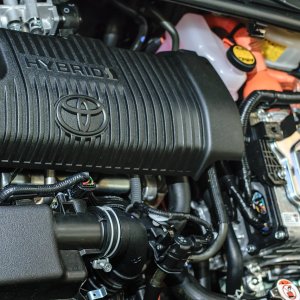San Luis Potosi, Ready for the Challenges to Come

STORY INLINE POST
Q: How ready is the San Luis Potosi labor market to welcome automotive newcomers?
A: We have helped big automotive companies to reduce their turnover rate. With one company, for example, we helped its directors recognize what the company had to offer in terms of benefits compared to others in the region. After one and a half years, the company had achieved optimum turnover rates. Talent retention is not a matter of salaries but of additional benefits.
San Luis Potosi has become more attractive for employees given the labor market’s conditions. With more competition, salaries have increased, although they still remain competitive for employers. In addition, formal labor has grown considerably in the state. In 2015, we had 16,900 new jobs, then 17,000 in 2016, 29,000 in 2017 and 15,000 in 2018. Our unemployment rate remains at 3.27 percent as of October 2019 while informality has decreased below the national average.
By creating more jobs, we also create more opportunities for engineering and technical graduates. Yearly, we produce approximately 4,082 engineers who graduate from all universities in the state. Almost 94,000 students are enrolled in engineering-related programs at the technical and university level. This creates a universe of people who can eventually contribute to the sector. Companies that have been struggling to find qualified people need to improve what they are willing to offer an employee, not only in terms of salary but working benefits.
Q: What are you doing to help those over 30 years old to shift from informality to formal employment?
A: We are getting involved at high schools and universities with our dual-education program. More than 64 companies and six universities and technical institutions have already signed up to collaborate on this program. Students can participate in internships at these companies, which leads to an almost 100 percent hiring rate within six months after graduation. Since they know what to do at the company already, they can do it more efficiently given their prior experience.
Regarding people over 30, companies are more open to hiring them. People over 40, on the other hand, have struggled. Since there are a lot of youngsters coming into the labor market, we need to find places for the older set given their individual experience. Universities also offer executive programs for people in their 30s or 40s who could not finish their Bachelor’s or want to start a new one.
Q: What are the most relevant changes in San Luis Potosi’s automotive landscape over the past 10 years and what needs to change over the next five years?
A: The first automotive company arrived in San Luis Potosi in 1968 and in 2006, GM announced its investment in the state. In those 38 years, around 118 new automotive companies came to the state or expanded its operations. By 2014, when BMW announced its investment, 110 new companies or expansions had happened. In eight years, the industry grew the same amount it did in 38 years. Moreover, from July 2014 to October 2019, we had around 110 new arrivals or expansions.
Of course, this growth rate will not remain exponential. However, it is a sign of how important momentum is for the state. To be prepared for the future, we are developing a one-of-a-kind tooling center in collaboration with CIATEQ. At this research facility, Ph.D. graduates are working on a joint venture with five Portuguese investors. Almost all molds are imported to Mexico and our bet is for San Luis Potosi to become the Mexican Portugal in terms of tooling.
Within the next five years, one of our main challenges is to strengthen the supplier base. The Center-Bajio-Western Alliance between Aguascalientes, Guanajuato, Queretaro, Jalisco and San Luis Potosi is geared toward attracting more companies to the region. A regional commitment, for example, is to homologate our supplier registry so we can make virtual matches to create three or four regional supplier forums following a B2B structure to make the automotive industry stronger.
There is no place in the world like the Bajio. We have nine OEMs and more than 1,000 suppliers for the automotive sector. Of course, these circumstances bring new challenges. For San Luis Potosi, this means changes and investment in mobility. We ought to generate conditions that foster both economic development and quality of life.
Gustavo Puente was appointed Minister of Economic Development of San Luis Potosi in 2015. Before that, he was president of CANACINTRA San Luis Potosi. In September 2019, he became President of the National Association of Ministers of Economic Development








 By Alejandro Enríquez | Journalist and Industry Analyst -
Fri, 07/17/2020 - 06:00
By Alejandro Enríquez | Journalist and Industry Analyst -
Fri, 07/17/2020 - 06:00
















